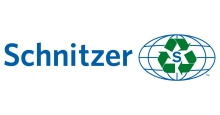Scrap Prices North America

Schnitzer: Near Record Annual Results Despite Falling Prices
Written by David Schollaert
October 24, 2022
Schnitzer Steel Industries Inc. said its fourth quarter ended Aug. 31 results were negatively impacted by declining ferrous and nonferrous sales prices and demand. The trend partially offsets the benefits of strong prices for its finished steel products.
Tighter supply flows and an extended outage at its Everett, Mass., recycling facility were partly to blame for the decreased quarterly results, the company said.
![]() Schnitzer recorded net income of $11 million in Q4 of its fiscal 2022, a far cry from net earnings of $76 million in the previous quarter, and just 25% of the $44 million gained in the same quarter last year.
Schnitzer recorded net income of $11 million in Q4 of its fiscal 2022, a far cry from net earnings of $76 million in the previous quarter, and just 25% of the $44 million gained in the same quarter last year.
Revenue was $894 million in Q4, down 11.5% from $1.01 billion the prior quarter but up 5.7% from $846 million from the year-ago quarter, according to earnings data released on Monday, Oct. 24.
“I am proud of what our team has accomplished during a year of significant volatility… and [we’ve] made significant progress on our strategic initiatives,” said Tamara Lundgren, Schnitzer’s chairwoman and CEO. “These include our investments in advanced metal recovery technology systems, launching GRN Steel™, our line of net zero carbon emissions products, and two acquisitions in the Southeast, including our first metal shredding operation in the region.”
Despite the lower quarterly earnings, the Portland, Ore.-based scrap recycler and long steel producer achieved its second-best annual results to date thanks to a record performance in the first nine months of its fiscal 2022.
A combination of factors, including high prices and strong demand for both ferrous and nonferrous scrap, increased sales volumes, and two acquisitions helped drive the annual results.
Schnitzer’s annual net income totaled $172 million for fiscal 2022, slightly ahead of the $170 million it posted in the prior year. Revenue for the year was $3.49 billion, a 26% boost over revenue of $2.76 billion in fiscal 2021.

The company said the Q4 decline reflected a sharp sequential decrease in selling prices for recycled metals due to lower demand and a weaker economic environment, leading to both a compression in metal spreads and an approximate $23 per ferrous ton adverse impact from average inventory accounting.
Schnitzer’s ferrous sales volumes were up 12% sequentially in Q4, though driven primarily by delayed shipments in Q3. Nonferrous sales volumes were down 8% quater-on-quarter (QoQ).
Both ferrous and nonferrous prices – down 28% QoQ and 7% year-on-year – were impacted by tighter supply flows that resulted from decreased prices, and an extended shredding operation outage at its Everett, Mass., facility, the company said.
Average Q4 net selling prices for finished steel products were $1,118 per net ton, down just 1% sequentially and staying near the all-time high achieved in Q3. Finished steel sales volumes were down 7% for the quarter, while mill utilization rates averaged 93%.
“Despite current headwinds, we expect the long-term structural trends for recycled metal demand to remain positive,” said Lundgren, noting that efforts to transition to low-carbon technologies and infrastructure investments would be the primary drivers of future growth.
Schnitzer is one of the largest manufacturers and exporters of recycled metal products in North America with operating facilities located in 25 states, Puerto Rico and Western Canada. Its steel manufacturing operations produce finished steel products, including rebar, wire rod and other specialty products. Schnitzer has seven deep water export facilities located on both the East and West Coasts and in Hawaii and Puerto Rico.
By David Schollaert, David@SteelMarketUpdate.com

David Schollaert
Read more from David SchollaertLatest in Scrap Prices North America

HRC vs. scrap spread widens over $150/ton in March
The HRC vs. prime scrap spread increased again in March.

HRC vs. prime scrap spread increases in February
The price spread between hot-rolled coil (HRC) and prime scrap widened in February ahead of the implementation of President Trump’s tariffs on steel.
HRC vs. prime scrap spread narrows again in January
The price spread between hot-rolled coil (HRC) and prime scrap continued to narrow in January, according to SMU’s most recent pricing data. While SMU’s average HRC price edged down week over week (w/w), it rose compared to a month ago. The January price for busheling also increased from December. Our average HRC price as of […]

HRC vs. prime scrap spread flat in November
The price spread between hot-rolled coil (HRC) and prime scrap remained the same in November as both tags were at the levels seen a month earlier, according to SMU’s most recent pricing data.

HRC vs. busheling spread narrows slightly in October
The price spread between hot-rolled coil (HRC) and prime scrap narrowed marginally in October, according to SMU’s most recent pricing data.
